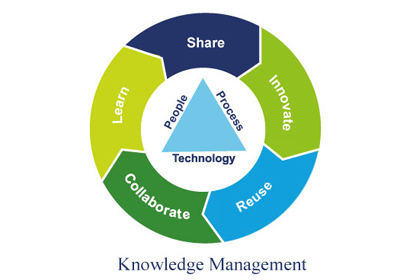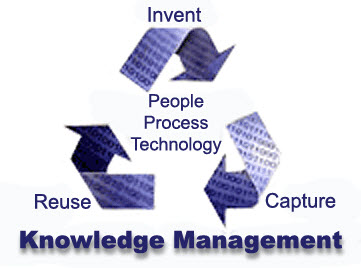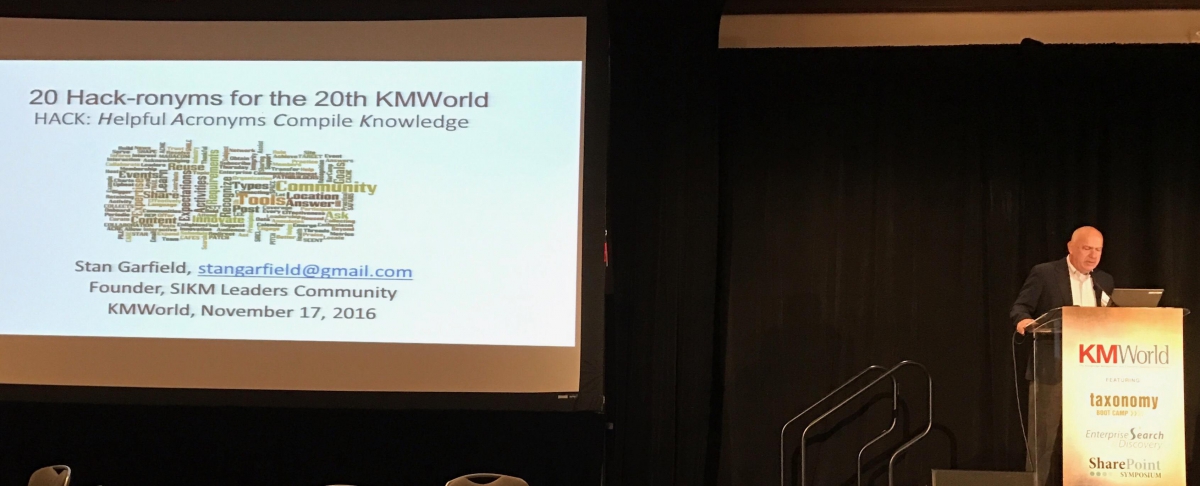Knowledge Management Through the Eyes of a Thought Leader - Stan Garfield

Posted by TallyFox on 06 December 2016
One of the influencers from the KM industry whose opinion is the most sought after is definitely Stan Garfield. Whether it is given through his Linkedin pulse articles, his Quora answers, his tweets or the content he shares on his personal website, people read what he has to say and they learn from it.

For those who are not acquainted with his story, Stan retired in May after eight years at Deloitte, where he led communities and enterprise social networking.
Prior to that, he spent 25 years at HP, Compaq, and Digital Equipment Corporation. In 1996 he launched Digital's first knowledge management program, helped develop the corporate KM strategy for Compaq, and led the Worldwide Consulting & Integration Knowledge Management Program for HP.
He founded the SIKM Leaders Community in 2005, and it has over 640 members globally. He leads the monthly calls, online discussions, and the annual community dinner during KMWorld.
He has presented and served as a mentor at 9 KMWorld conferences, published over 120 LinkedIn pulse articles, and answered over 170 questions on Quora. He wrote a book Implementing a Successful KM Program (2007) and contributed chapters to three others: Successful Knowledge Leadership: Principles and Practice (2013), Chapter 5: The Modern Knowledge Leader: A Results-Oriented Approach, Gaining Buy-in for KM (2014), Chapter 2: Obtaining support for KM: The Ten Commitments and Measuring the ROI of Knowledge Management (2017), Chapter: The Case Against ROI.
He is currently writing a new book on Selling Knowledge Management within organizations.
But what is he passionate about?
Stan Garfield: My professional passions include leadership, innovation, knowledge management, communities of practice, enterprise social networks, and social media. I have worked in knowledge management for over 20 years.
TallyFox: In your years in the field, you are in a unique position to see trends. How has KM evolved in the past 20 years?
Stan Garfield: Knowledge Management has not changed very much over the past 20 years. It started out by emphasizing the collection of documents into centralized repositories. It evolved to include connection, typically in communities of practice. New technologies, initially referred to as Web 2.0, offered improved ways to interact, including blogs, wikis, tags, and RSS. Now we have enterprise social networks, gamification, and cognitive computing.
But what has really changed?
People still can’t easily find information, resources, or experts they need to do their job. Enterprise search doesn’t work, and even when it does, the content is incomplete, obsolete, or irrelevant.
People are more reluctant than ever to ask for help in public, contact people in other organizations, or say the wrong thing. They would rather suffer in silence than expose their ignorance to the world, or to be criticized, blamed, or ridiculed.
Organizations still want to push information out to audiences, rather than making it attractive to pull content for themselves, or delivering it automatically based on user preferences.
And with the increased use of social media and mobile apps, new problems have been introduced. We suffer from information overload, limited attention spans, difficulty in knowing what is true, and nasty online behaviors. Nancy Dixon also spoke about it in the interview she gave for your blog, outlining the three eras as: Collection, Connection and Conversation. You can read more about it on her blog as well.

TallyFox: Where do you see KM going in the next five years?
Stan Garfield: Given the lack of significant change over the past 20 years, I don’t see the field changing much in the next five. I would like to see a shift in emphasis in three key areas:
- Help people use processes effectively, rather than rolling out technology.
- Improve decisions, actions, and learning, rather than increasing engagement, adding value, or driving transformational change.
- Connect people to each other so they can help each other at the time of need, rather than collecting documents or updating skills profiles.
TallyFox: Where do you see a software product's role in effective knowledge sharing?
Stan Garfield: I think that software tools can help do the following:
- Curate key content so that enterprise search returns the desired results
- Connect people in social networks so that is easier to ask and answer questions at the time of need
- Allow people to opt in to receive the most relevant information, in just the right amount, at times when it can be understood and applied

Tallyfox: Many knowledge managers look up to you for guidance. What would you say to them – why are they failing to implement a successful knowledge sharing program?
Stan Garfield: Here are 10 common reasons:
1.Trying to take on too much. There are at least 50 different people, process, and technology components available for implementation. Avoid the temptation to try all of them, and instead, keep focused on choosing the few which will yield the greatest benefits in the short term to your organization.
2. Focusing on technology. Implementing enterprise social networks (ESNs), portals, repositories, search engines, and other tools will not automatically address how content is provided, whether or not people use the tools, or how using the tools yields beneficial results. Don’t fixate on rolling out tools, and then trying to drive adoption, which is a losing proposition. Start with the needs of the organization, not with finding a use for a tool which you have already bought.
3. Not engaging the constituents. Any new initiative will fail if it does not meet the needs of its intended audience or is perceived as being created in isolation. To prevent this from happening, treat your users as customers whom you are trying to acquire, satisfy, and keep.
4. Doing too much studying and planning and not enough prototyping and piloting. It's necessary to study and plan before starting a new initiative. However, there is a time to declare success for your planning efforts and move on. Prototyping and piloting allow you to test out new ideas, gain experience, and make iterative refinements.
5. Not reusing what others have already learned and implemented. The field of knowledge management has been around for over 20 years. A lot has been learned during this time, and you can benefit from this by taking advantage of a wide variety of KM resources.
6. Focusing on KM maturity models and benchmarking. Each environment is unique. I recommend using frameworks, models, and benchmarking as sources of ideas, not as precise prescriptions to be slavishly followed. Seth Godin wrote, "Benchmarking against the universe actually encourages us to be mediocre, to be average, to just do what everyone else is doing."
7. Producing metrics for the sake of metrics. Avoid collecting every random thing, sliced and diced every possible way, which someone might want to know once. They probably have no intent to do anything with this data, other than to say, “Oh, that’s interesting.” Collect metrics so that you can take action based on them.
8. Not controlling the creation of communities and ESN groups. Prospective community members can be overwhelmed if there are multiple communities for each topic. As a result, they may not join any of them, or may not see any value if they happen to join one. There should be just one community per topic, and topics should be managed so that they are not too broad or too narrow.
9. Pushing content. Organizations want to push information out to audiences, rather than making it attractive to pull content for themselves, or enabling interaction with leaders.
10. Not leading by example. Not practicing what you preach sets a bad example. People will closely observe the actions of leaders, and mimic them. So lead by example and model the desired behaviors.

TallyFox: What results do you see cognitive computing and artificial intelligence tools playing in the next two to three years for knowledge sharing?
Stan Garfield: There are many opportunities, but keep in mind that AI has been around for a long time, and has not yet realized its full potential. Here are five desirable results:
- Help people make better decisions, take action more quickly, and achieve more successful outcomes
- Deliver relevant information and advice at the time of need
- Reduce information overload and optimize people’s available attention span
- Allow people to act more efficiently and effectively
- Reduce errors, minimize loss and damage, and improve health and safety
TallyFox: Social media tools are shaping new communication patterns on new platforms. Does this have a role in knowledge sharing?
Stan Garfield: Social media tools are making it easier to share knowledge, ask and answer questions, find resources, recognize colleagues, work out loud, and suggest new ideas. When managed effectively, this can improve knowledge sharing.
An ideal use of social media is for communities of practice in an enterprise social network. Effective management of such communities includes:
- Preventing redundant communities
- Having the right scope for each community – not too narrow, and not too broad
- Nurturing community leaders who keep their communities active and effective
- Establishing communities that cover the key topics for the organization, achieve a critical mass of members, and have diversity of experience and thinking regularly represented
- Answering all questions within 24 hours
TallyFox: How can knowledge managers sell investing in knowledge management to their management?

Stan Garfield: I am writing a new book about this. Here are 10 ways to sell KM in your organization:
- Lay the foundation: learn about KM yourself, identify the top 3 objectives, articulate your vision, define compelling use cases, and lead by example
- Obtain leadership commitment: tell stories, sell the benefits, make the business case, and obtain 10 commitments
- Educate all leaders, stakeholders, and users
- Communicate regularly and effectively
- Seek outside help through visits, communities, analysts, and consultants
- Build an extended team of key leaders, respected thought leaders, influencers, champions, and an expert staff
- Understand and embrace technology appropriately: find a killer app, make it easy to use, embed knowledge flow into workflow and business processes, and partner with IT
- Improve continuously: seek suggestions, implement the suggestions, and iterate
- Nurture a knowledge-sharing culture
- Recognize and reward for the desired behaviors using goals and measurements, incentives and rewards, promotion requirements, gamification, and badging

TallyFox: What inspired you to start writing about this topic? Is this something you've been frequently approached about to advise on?
Stan Garfield: It’s been ten years since I wrote my first book, Implementing a Successful KM Program. I retired in May, and have been thinking about writing another one. I was asked to write one about selling KM, and the idea appealed to me. I have already written articles that relate to this topic, and I am writing new content for the book.
TallyFox: How can a software vendor help sell investing in knowledge management? Can the software itself be helpful in this?
Stan Garfield: Vendors can partner with their clients for mutual benefit. Vendors can offer favorable terms and conditions to make it attractive to get started. They can provide use cases, success stories, and case studies to help sell KM using their product. And they can be responsive to their clients’ requests for product improvements to help improve usability, effectiveness, and user satisfaction.
The software itself can help in the following ways:
- Being easy and intuitive to use. This makes it easier to get users to try it and stay with it.
- Offering flexibility in how it can be accessed and used, e.g., online, email, mobile app. This broadens its appeal to a wide range of users, and overcomes typical objections.
- Allow simple and complete integration with other applications, e.g., enterprise search, email, HR systems, etc. This makes it convenient for users.
- Provide rich functionality that is clearly better than other alternatives, and helps people to much more readily do their work. New technology needs to be ten times better than what it replaces in order for most people to change over to using it.
- Stay consistent in user interface and fundamental functionality. This prevents people from looking for alternatives or abandoning it.
Stan really does practice what he preaches, and the industry is grateful for that.
If you want to connect with Stan, feel free to visit his LinkedIn profile or follow him on Twitter.

Comments
Leave a comment